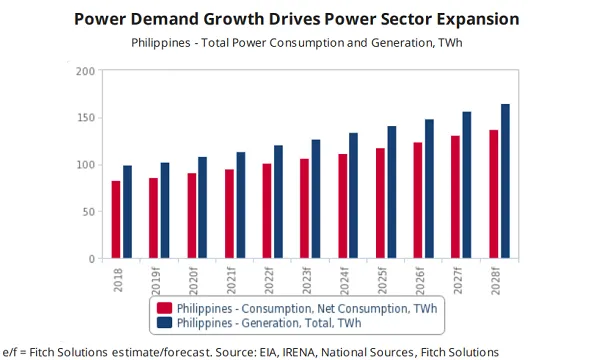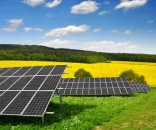
Can the Philippines curb coal dependence with renewables reform?
It is expediting programmes like the renewables portfolio standard.
In July 2019, Philippine president Duterte had issued a directive in July 2019 which signalled intentions to reduce the country’s dependence on coal for power generation with more gas and renewables. The Department of Energy (DoE) has also pledged to expedite two key renewable energy policies – the Renewable Portfolio Standard and the Green Energy Option, which are expected to encourage the development of the market. This is on top of the existing favourable regulatory environment for private and foreign investment, including cost-reflective electricity tariffs and an established feed-in tariff (FiT) programme.
However, Fitch Solutions said in a note that coal will continue to be the key source for the country’s power expansion plan as it remains the “most practical” means to stimulate affordable electricity generation growth at the pace and scale needed to support continued economic growth. “We expect the Philippines government to turn to coal to meet the country’s power demand surge, driven primarily by strong macroeconomic and demographic fundamentals, and government goals to achieve a 100% electrification rate by 2022.”
The firm argued that coal is also a cheaper and more reliable option, particularly as resources in the Malampaya gas field depletes with limited scope for exploration success in alternative locations in the country. “Plans to commission the Philippines’ first LNG import terminal has been plagued by a host of setbacks and has been delayed again to March 2020,” it said.

On the other hand, renewables are only expected to supplement baseload resources as intermittency and low capacity factors of wind and solar power generation remain. Coal generation is forecast to increase slightly to reach 59.1% of the total power mix by 2028 from 52% in 2018, whilst non-hydro renewables will reach 10.2%.
Moreover, the government has approved several coal-fired power projects as energy projects of national significance (EPNS) at the beginning of 2019, such as the 2x668MW Dinginin supercritical clean-coal fired power plant in Bataan and the 2x600MW Atimonan ultra-supercritical coal-fired power plant. As of the beginning of 2019, there was around 9.2GW of coal-fired capacity recorded in Fitch Solutions’ Key Projects Database, dominating the power project pipeline at 56.7% of all power projects.
“The government's decision to grant 11 mining and energy companies approval to explore and develop coal blocks in February 2013 further illustrates its ambitions for the growth of the coal power segment, and this government stance has remained largely the case since,” Fitch Solutions added.













 Advertise
Advertise











